Having a garden that stays colorful and vibrant year-round is easier when you plant the right flowering shrubs. Some varieties are tough enough to bloom through multiple seasons, providing continuous beauty even when other plants fade.
The trick is to choose shrubs with staggered bloom times, so there’s always something in flower, no matter the month. Many of these plants also offer fragrant blossoms, evergreen foliage, or striking berries, ensuring your garden remains visually interesting through every season.
By selecting the right combination of low-maintenance, long-blooming shrubs, you can create a landscape that stays alive with color, texture, and scent—365 days a year.
Azalea
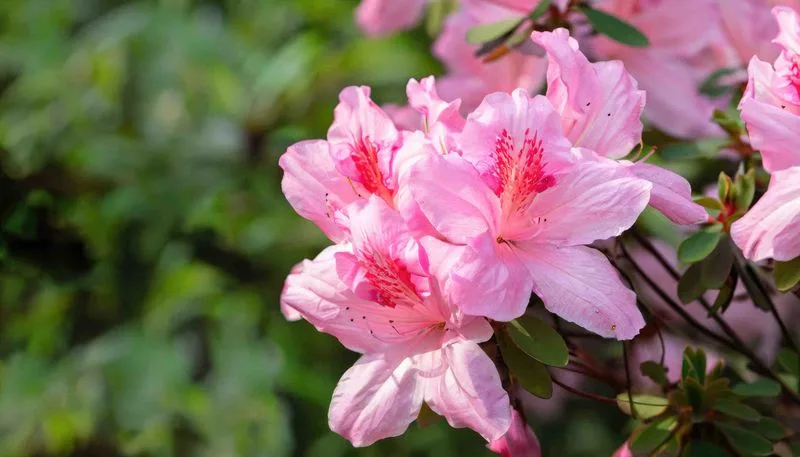
Known for its striking colors, Azalea offers a spectacle of blooms in various shades from early spring. Its vibrant flowers can create a stunning focal point in any garden. Azaleas prefer a spot with filtered sunlight.
They thrive best in slightly acidic, well-drained soils. Regular pruning helps maintain their shape.
For a dramatic effect, consider planting them in groups. Despite their delicate appearance, Azaleas are surprisingly hardy, with some varieties blooming multiple times a year. This makes them a versatile choice for gardeners seeking continuous color.
Camellia
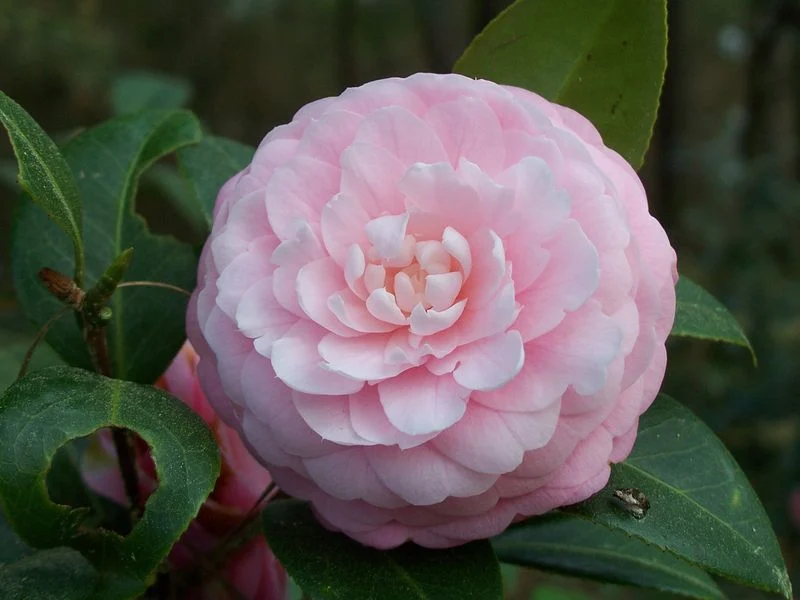
With its elegant and lush blooms, Camellia is a garden favorite during the colder months. This evergreen shrub boasts exquisite flowers, typically appearing from late fall through winter. Camellias prefer shady locations.
Adequate watering and well-drained soil ensure optimal growth. These plants add a touch of elegance and can be an excellent choice for shaded garden areas.
Camellias are not only admired for their beauty but also for their resilience, withstanding cooler temperatures while delivering a burst of vibrant color when few other plants are in bloom.
Rhododendron
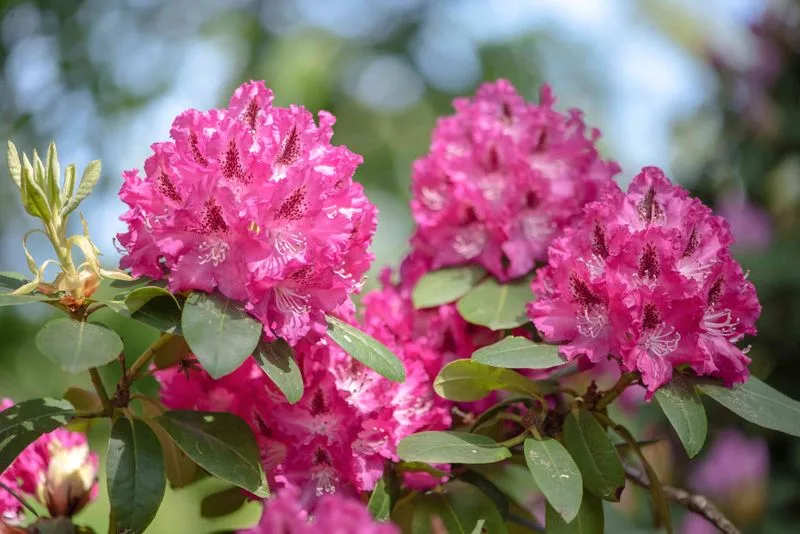
Rhododendrons are known for their eye-catching clusters of flowers that bloom in spring. These shrubs thrive in cooler climates and woodland settings.
Their colorful blossoms range from white to vibrant purples and reds. Rhododendrons prefer acidic soils similar to Azaleas.
Periodic mulching helps retain moisture and maintain soil acidity. These shrubs can grow quite large, making them ideal for creating natural screens or backdrops in garden designs, bringing both color and structure to outdoor spaces.
Hibiscus
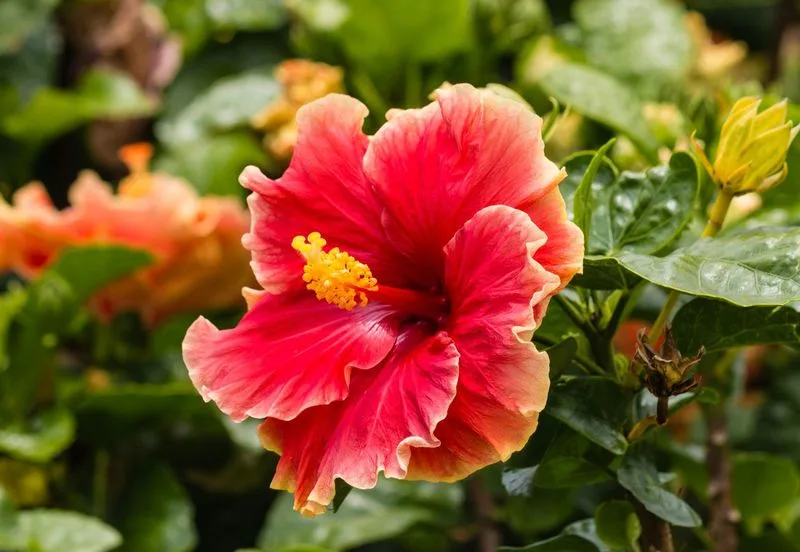
Hibiscus plants bring a touch of the tropics to your garden with their bold and vibrant flowers. Blooming primarily in the summer, they thrive in sunny locations.
These shrubs require regular watering and fertile, well-drained soil for best results. Pruning in early spring encourages bushier growth and more blooms.
Their exotic appearance makes Hibiscus an excellent choice for adding a splash of color and a sense of paradise, even in temperate climates, as they bloom profusely in warm weather.
Gardenia
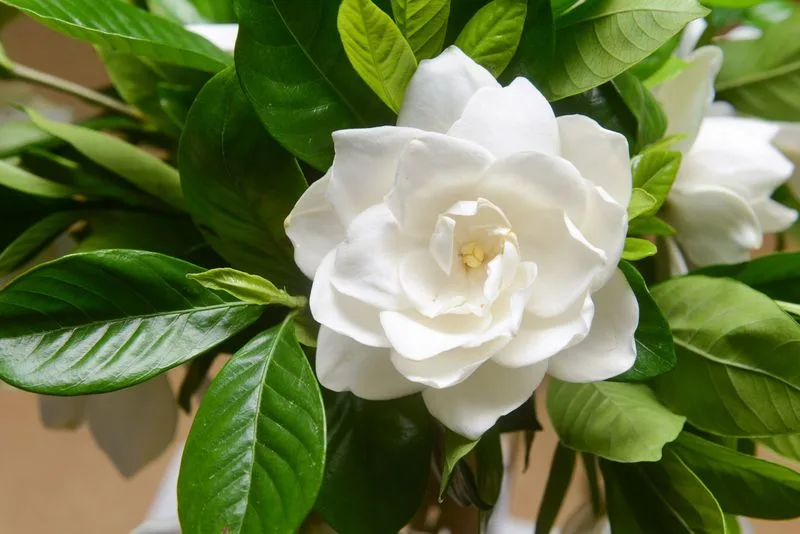
Gardenias are renowned for their fragrant, white blooms that appear in late spring to summer. This evergreen shrub is a delight for those seeking aroma as well as beauty.
Gardenias thrive in well-drained, acidic soil and require ample moisture but should not be overwatered. A spot with morning sun and afternoon shade is ideal.
Pruning after the blooming season helps maintain their shape and promote robust growth. These shrubs are perfect for garden enthusiasts who appreciate both visual and olfactory appeal.
Butterfly Bush
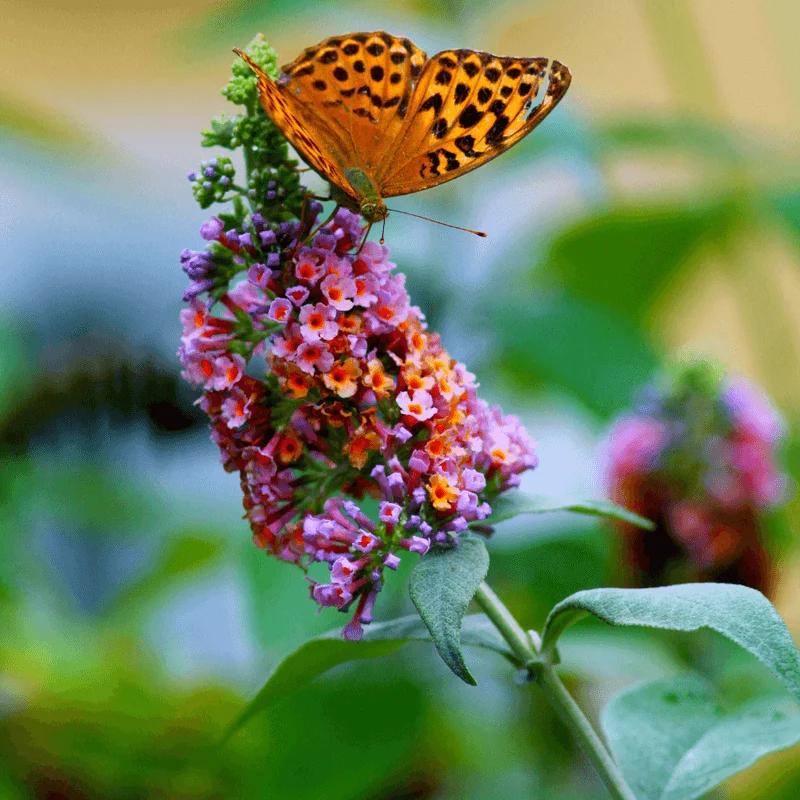
As its name suggests, the Butterfly Bush is a magnet for pollinators, especially butterflies. Blooming throughout summer, its colorful flower spikes add dynamic beauty to any landscape.
These shrubs prefer sunny spots and well-drained soil. Regular deadheading of spent blooms encourages continuous flowering.
Their fast-growing nature makes them ideal for quick garden transformations. Butterfly Bushes not only enhance garden aesthetics but also support biodiversity by attracting essential pollinators.
Lilac
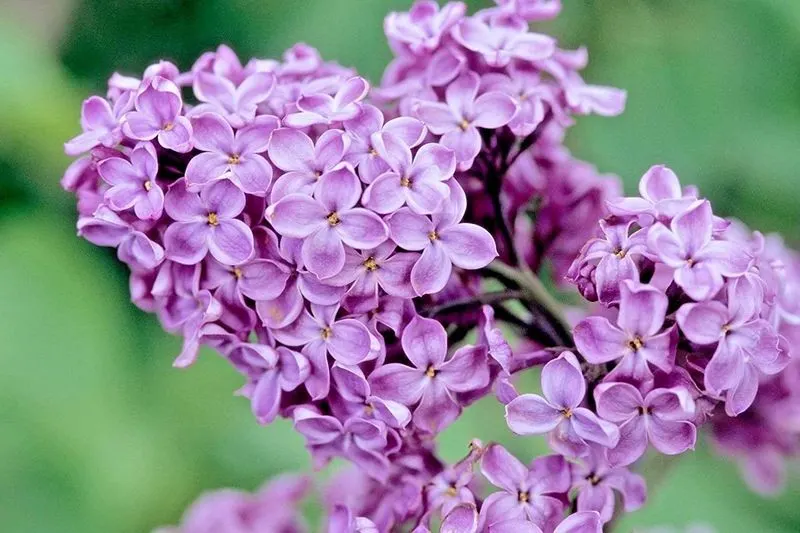
Lilacs are cherished for their enchanting fragrance and beautiful clusters of flowers. Blooming in late spring, they provide a classic charm to gardens.
These shrubs flourish in well-drained, neutral to alkaline soils under full sun. Annual pruning after flowering keeps them healthy and promotes lush blooms.
Lilacs are perfect for creating hedges or as standalone features due to their robust growth and visual appeal. Their scent is evocative of nostalgia and tranquility, making them a beloved choice for traditional gardens.
Forsythia
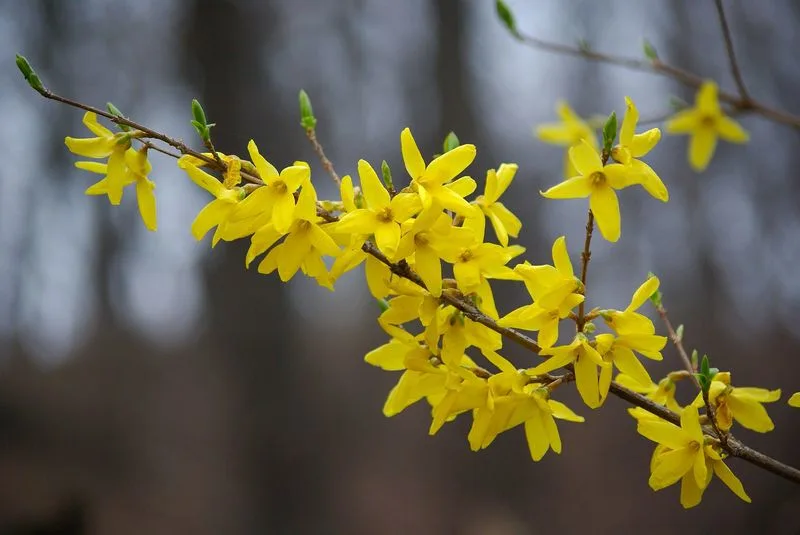
Forsythia is often one of the first shrubs to bloom in early spring, heralding the arrival of warmer days with its bright yellow flowers. It’s a cheerful addition to any garden.
These shrubs thrive in full sun and prefer well-drained soil. Forsythia can grow quite large, so annual pruning is necessary to keep them in check.
They are excellent for hedges or as standalone showpieces due to their vibrant color and early blooming. Forsythia’s golden blooms provide an uplifting sight after a long winter.
Hydrangea
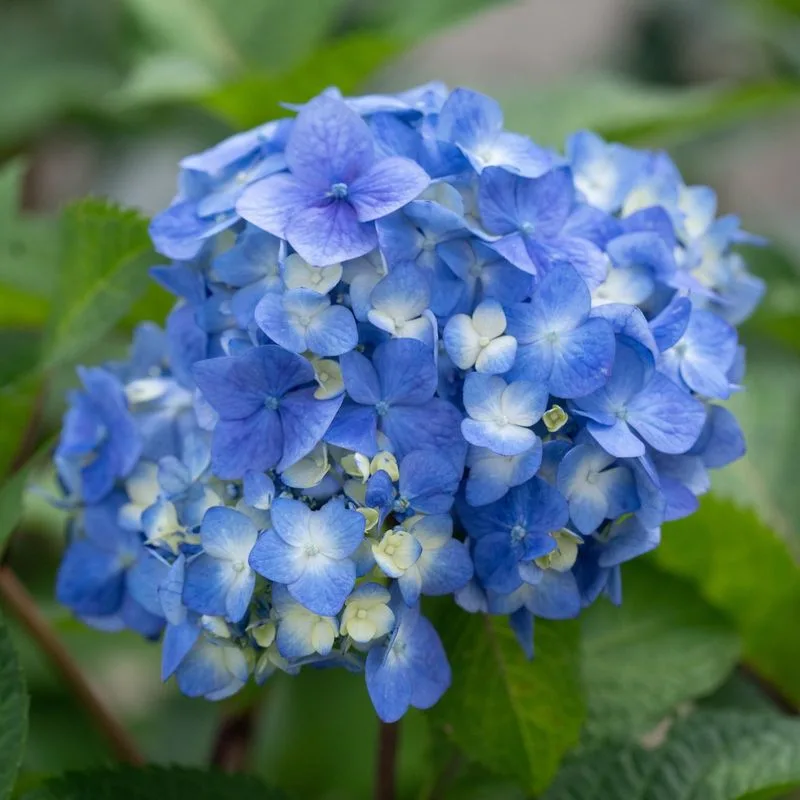
Hydrangeas are celebrated for their large, colorful blooms that can range from blue to pink, depending on the soil pH. These flowers appear from late spring to early fall.
Preferring partial shade and well-drained soils, Hydrangeas require regular watering. Adding aluminum sulfate to the soil can intensify the blue hue of the blooms.
Their dramatic flower heads make them a favorite for cut flower arrangements. Hydrangeas offer versatility in garden design, suitable for borders, containers, and as focal points in the landscape.
Daphne
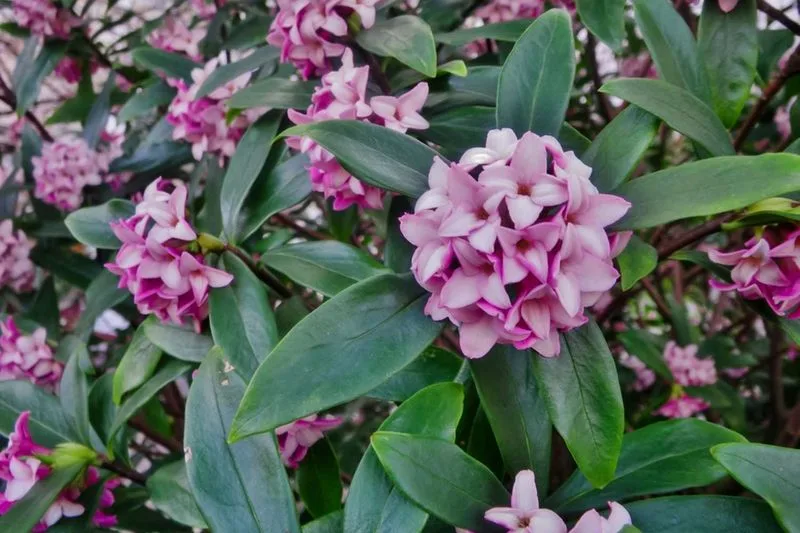
Daphne shrubs are prized for their intense fragrance and clusters of pink and white flowers. Blooming from late winter into spring, they bring a burst of scent and color when few others do.
These plants prefer well-drained, slightly acidic soil and thrive in partial sun. Despite their beauty, Daphnes are somewhat finicky, requiring careful attention to watering.
Their compact size makes them perfect for small gardens or as feature plants in larger landscapes. The combination of fragrance and early blooms makes Daphne a gardener’s delight.
Winter Jasmine
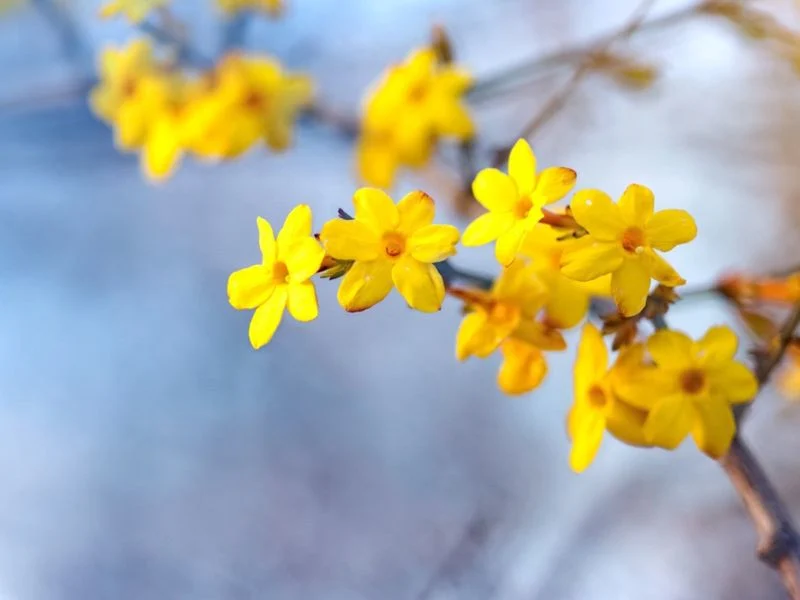
Winter Jasmine brightens the coldest months with its cheerful yellow flowers. Blooming from late winter to early spring, it provides a much-needed splash of color.
This hardy shrub thrives in well-drained soil and can tolerate a range of light conditions. Pruning after flowering helps maintain its shape and encourages new growth.
Winter Jasmine’s cascading branches make it ideal for training over trellises or walls, adding architectural interest to gardens. It’s an excellent choice for those looking to extend their garden’s blooming season into the colder months.
Rose
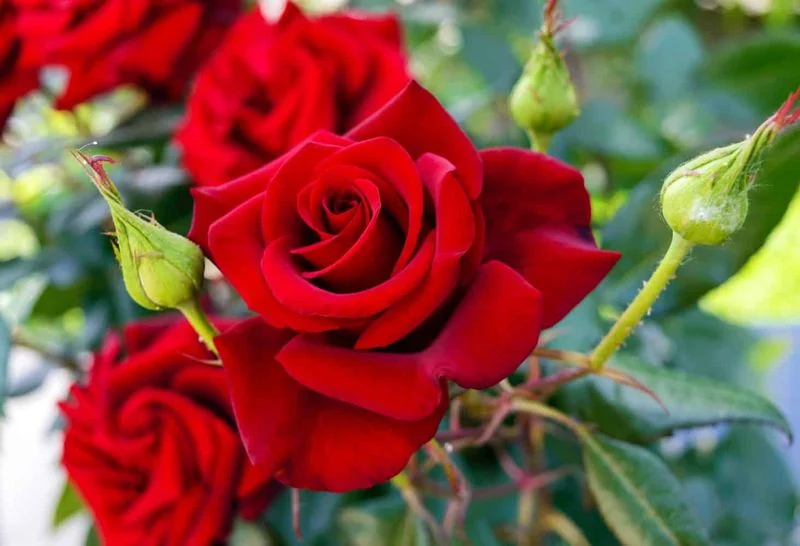
Roses have earned their place as garden staples with their timeless beauty and varied colors. Blooming throughout the growing season, they offer versatility and charm.
These shrubs require sunny spots and rich, well-drained soil. Regular pruning and deadheading are essential for promoting new blooms and maintaining vigor.
With numerous varieties available, roses can fit any garden style—from formal rose gardens to casual cottage settings. Their intoxicating scent and elegant appearance make them a perennial favorite among gardeners.
Spirea
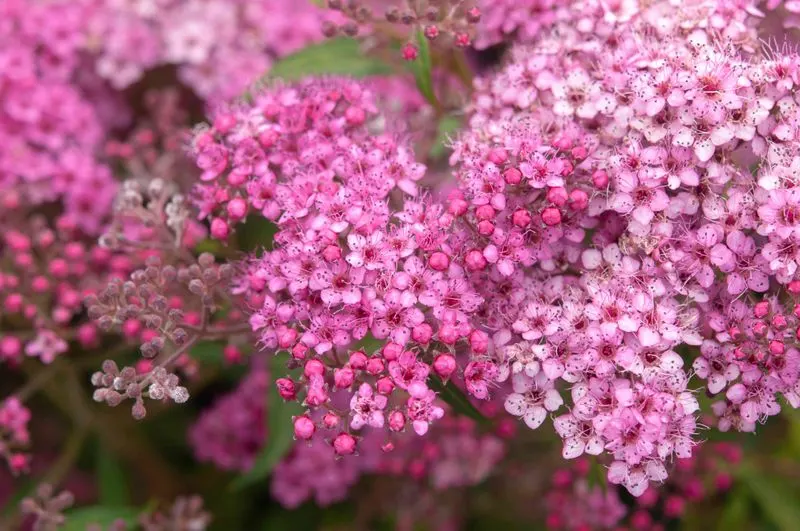
Spirea is loved for its graceful arching branches and abundant clusters of small flowers. Blooming in late spring to early summer, it’s a reliable choice for continuous beauty.
These shrubs thrive in full sun and are adaptable to various soil conditions. Minimal maintenance is required, making them ideal for busy gardeners.
Spirea’s delicate flowers can enhance any landscape, from formal gardens to informal borders. Their understated elegance and easy care make them a staple for those seeking beauty without hassle.
Bougainvillea
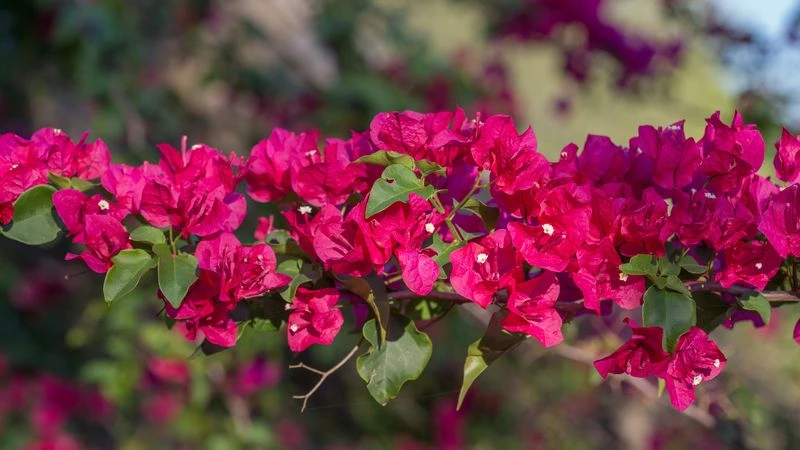
Bougainvillea stands out for its brilliant, paper-like bracts that surround tiny flowers, providing a dramatic display from spring to fall. This tropical woody vine loves full sun.
Well-drained soil and regular watering during dry spells support its lush growth. Pruning helps control its size and encourages more blooms.
Perfect for trellises, walls, or as a ground cover, Bougainvillea brings a vibrant touch to gardens. Its striking appearance and extended blooming period make it a favorite in warm climates.
Loropetalum
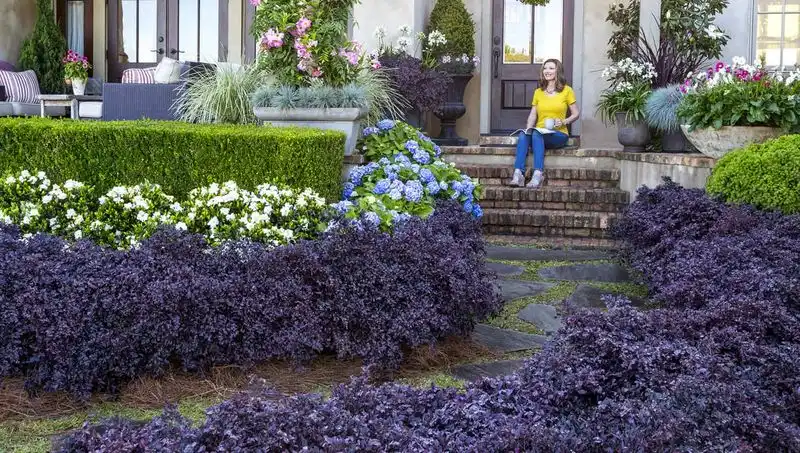
Loropetalum is a unique shrub known for its colorful foliage and fringe-like blooms. Flowering in spring, it offers a burst of color that stands out in any landscape.
This plant prefers well-drained soil and a sunny to partially shaded location. Regular pruning keeps its shape and promotes healthy growth.
Loropetalum’s vibrant leaves provide year-round interest, while its flowers offer seasonal highlights. It’s an excellent choice for adding texture and color to modern garden designs.
Abelia
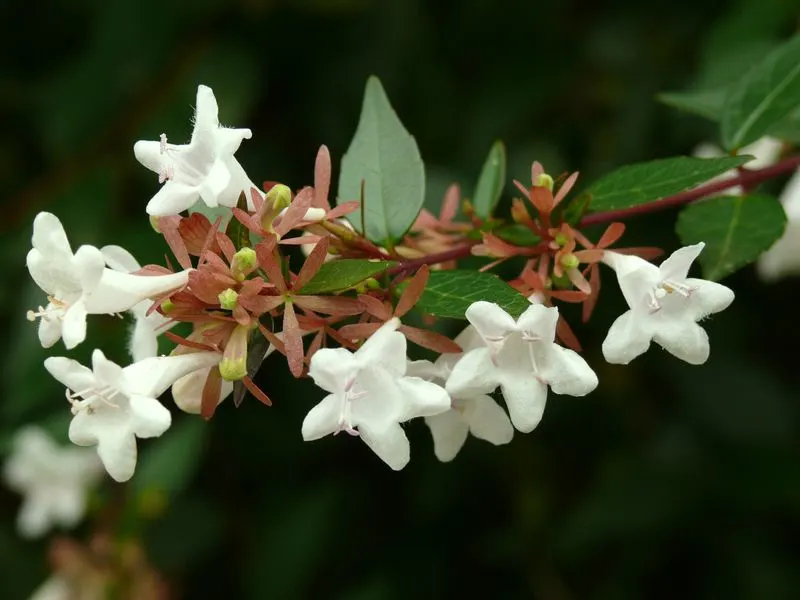
Abelia is celebrated for its long blooming period, starting in spring and continuing into fall. Its tubular flowers attract a host of pollinators, making it beneficial for biodiversity.
These shrubs thrive in full sun and well-drained soils. They require minimal care, making them ideal for gardeners seeking low-maintenance beauty.
With its glossy foliage and delicate flowers, Abelia adds a touch of elegance to borders and mixed plantings. Its extended flowering period ensures that gardens remain vibrant for months.
Oleander
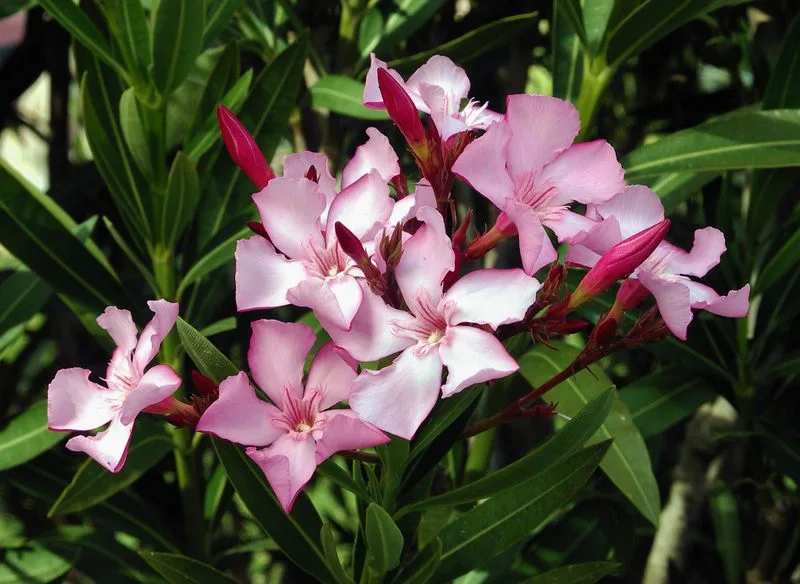
Oleander shrubs are known for their robust nature and clusters of colorful flowers, which bloom from spring to fall. This hardy plant thrives in sunny locations.
Well-drained soil and occasional pruning are all they need to flourish. Despite their beauty, it’s essential to note their toxicity, making them unsuitable for gardens frequented by pets and children.
Oleanders are perfect for adding color to hot, dry landscapes. Their resilience and stunning flowers make them a popular choice in challenging growing conditions.
Viburnum
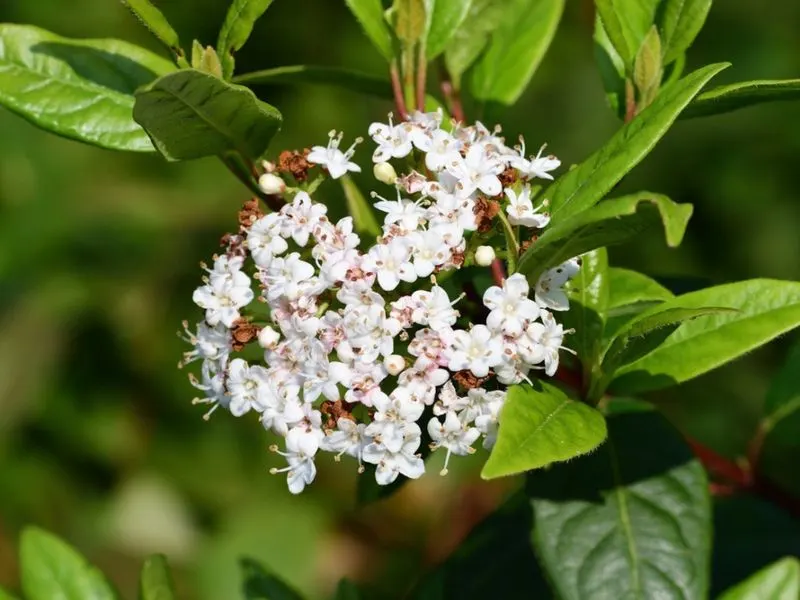
Viburnum is appreciated for its fragrant, showy flowers and versatility in the garden. Blooming varies by species, with some flowering in early spring and others in summer.
These shrubs flourish in well-drained soil and adapt to both sun and partial shade. Regular pruning promotes vigorous growth and abundant flowering.
Viburnums are excellent for hedges, screens, or mixed borders, contributing both beauty and biodiversity. Their diverse bloom times and forms make them adaptable to a variety of garden styles.

